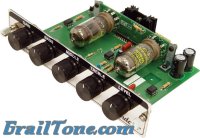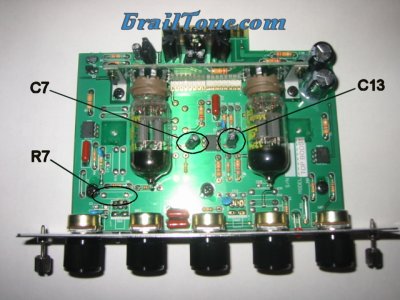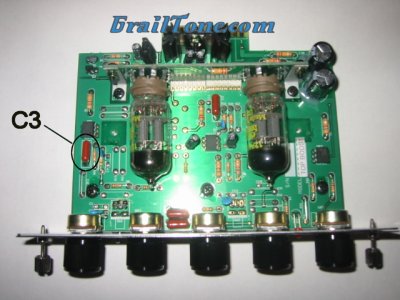Randall MTS Series Module Modifications

Randall MTS Module Mods
One of the great things about the Randall MTS series is the ability to customize your tone to
exactly how you want. This includes modifying your modules to get the sound perfect for your
setup.
In this article we will cover the current modifications to the different modules. Check back often
as new mods are become available this article will be updated.
Randall Clean & Blackface Mods
There was an issue discovered after several production runs in all the clean to mid-gain Randall
models including the Clean, Blackface, DLX, Top Boost, Plexi, JTM, & Brown, that causes excess
distortion overloading the input gain. Too eliminate this issue and clean up these modules,
position R1 which is a 470 ohm 1/2w resistor, needs to be changed to a 150 Ohm 1/2w resistor. This
is only the early production Randall models and some of the early Egnater models. The new modules
have been fixed at the factory but you should check any current module that you have. You can
identify what value is in your module by the color bands located on the resistor, 470 ohm
resistors have yellow, purple, and brown color bands, where the correct 150 ohm resistors have
brown, green, brown color bands.
Randall Top Boost Mod
The Randall Top Boost module comes from Randall designed around a hot rodded AC30 Top Boost which
produces more gain than a normal AC30TB. You will need to remove the tube cover and the bottom
plate to access all the parts that need to be changed or removed.
Here are the changes that need to be made:
Top Boost to traditional Vox
R7 change from No Part to 100K Ohms (1/4 watt)
C7 change from 22u to No Part - simply cut this part out
C13 change from 22u to No Part - simply cut this part out

Sound clip features the stock Randall Top Boost module followed by a modded Top Boost module with
only C7 and C13 removed. Once the R7 resistor has been changed more clips will be added. The
clip features a bar chord section, open chords and a short rhythm section. There is minimal change
by only removing the C7 and C13 capacitors. However there are major changes when adding the 100K
resistor, this really brings out the Vox chime. MP3 doesn't sound that great with the resistor change
as the tone controls where left the same for all three takes. Gain was set at 12 o'clock. Order
of clip is stock Top Boost, C7 and C13 removed, 100K resistor added.
Randall MTS Module High Gain Mod
Need to make your attack tighter on your high gain module (not recommend for Plexi module)? There
is a capacitor that controls the amount of low end that is input into the gain stage. Changing
this cap can tighten your attack especially if you detune.
"There is a capacitor labeled C3 on the modules. It is located about an inch back from the gain
knob on the left edge with knobs facing you. This cap controls the low end at the input of the
preamp and has a profound affect on the tightness and clarity. The Randall modules tend to have a
larger capacitor for a "bigger" low end. You can easily experiment with this part (careful
soldering required)to adjust to your liking. The smaller the capacitor, the tighter the bass and
attack will be. For example, if the module has a .0047 (may say 472), changing to a .0022 or .001
will do it. You can do it without disassembling the module. FYI, the new dual sound Egnater
modules have a toggle switch on the front that does it for you." - Bruce Egnater (amp designer)
"Most of the higher gain modules ship with a similar value input coupling cap which really
determines the amount of low end in the gain section. We set them in a pretty universal spot with
the hope to make the majority happy, however if you detune, use a dark sounding guitar, or just
like tight palm mute tone this cap can be changed to tighten up the attack and note definition. If
anyone wants too here is the position and suggested part values. It's located about half way back
on the board right behind the gain pot." - Randall Amplifiers
You can change this cap without taking the bottom tray or the tube shield off, just be careful not
to burn a hole in the board. There have been great results reported by making this mod to the
Randall Recto module. I would recommend to anyone that has a hi-gain module,
especially if you're really detuning the guitar, that you change this cap to a .0022u or even .001u,
you will notice a much tighter feeling tone with more pick definition.
Here's what you get with each capacitor change:
.0047u - Lots of low end in the gain making the attack feel soft
.0022u - cuts the lows in the gain a little making it tighter (stock on XTC)
.001u - this value gives the module really tight pick attack.

Here are the PCB files for each module in PDF format.
|
